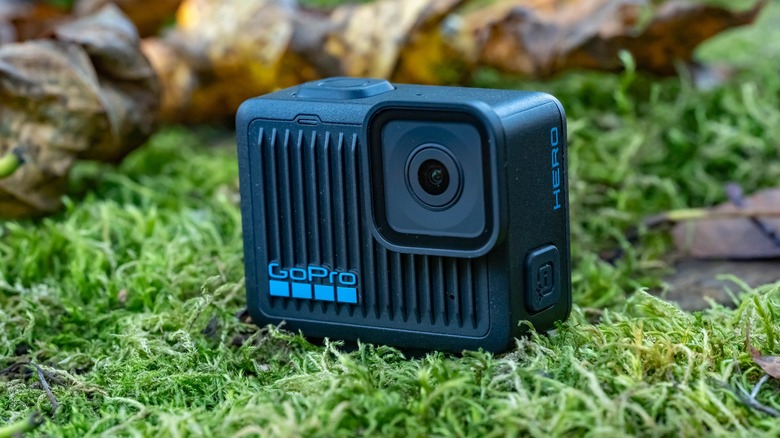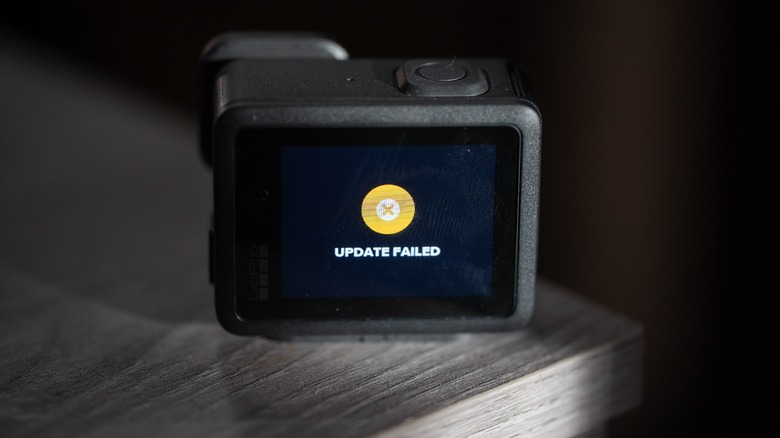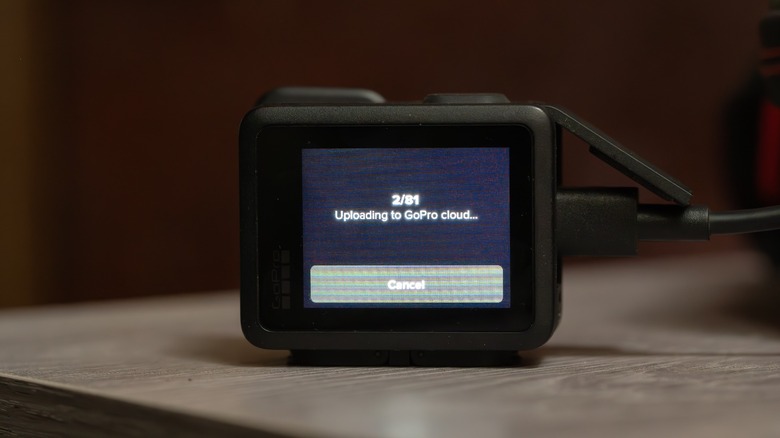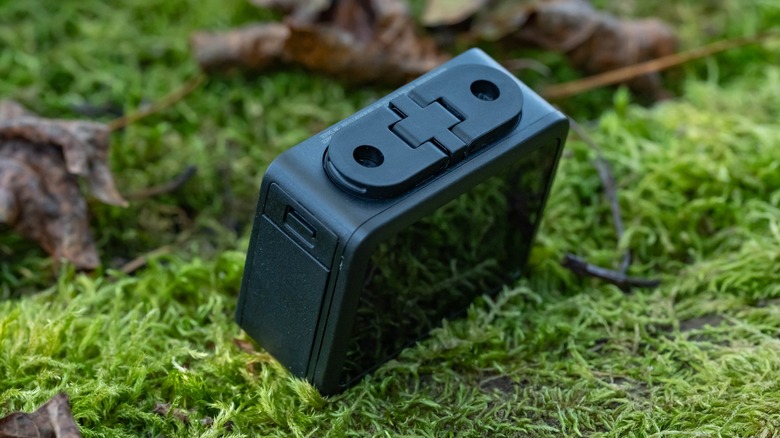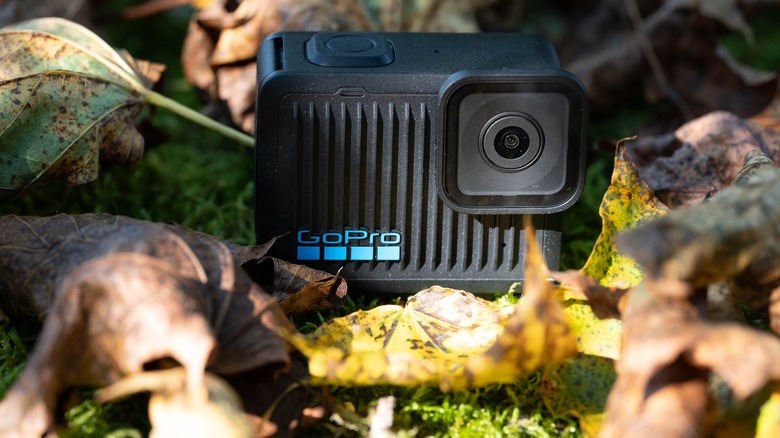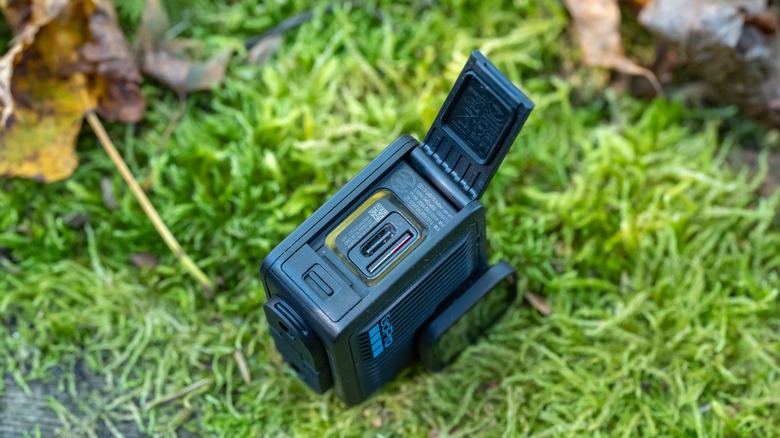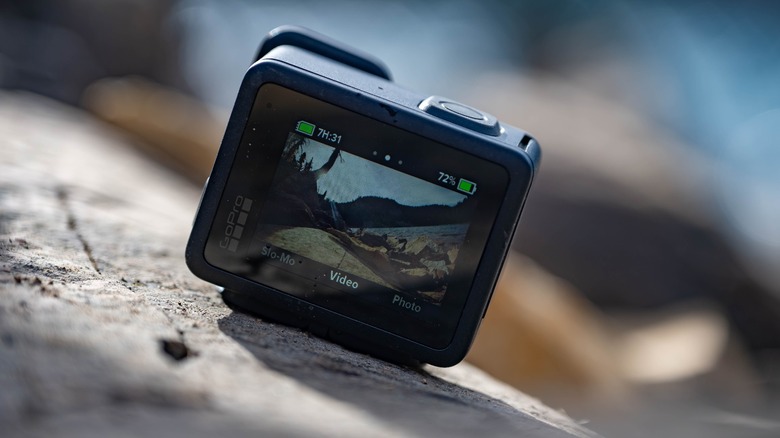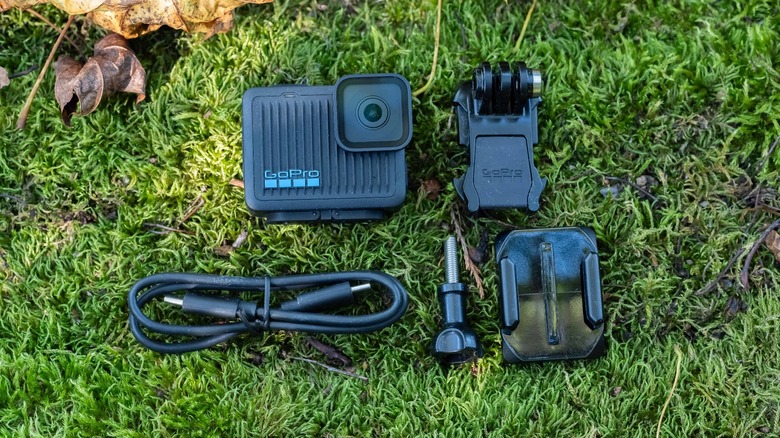GoPro Hero (2024) Hands-On: Is It A Bargain For $199, Or Should You Spend More?
We may receive a commission on purchases made from links.
The GoPro Hero (2024) is the little brother of the Hero 13 Black, and little is certainly the right descriptor to use. The Hero 13 Black can be called pocket-sized, but you'll want big pockets to carry it comfortably. The GoPro Hero, on the other hand, is small enough to almost be wallet-sized, assuming of course that you carry an extra large wallet. This is a minimalist camera in just about every way, including its name and price tag. A big question is whether this minimalism works for or against it, and whether or not you're better off shelling out for a bigger, more expensive action camera.
I took the Hero (2024) out on a multi-day wilderness backpacking trip to see how it performed in rugged, real-world conditions, and tested it head-to-head with the GoPro Hero 13 Black to determine how the user experience and video quality stacks up. I put this little camera through its paces to see if it's as good in practice as it appears to be on paper.
The GoPro Hero is definitely marketed toward beginners looking to pick up their first action camera, but is this the Hero they're looking for?
GoPro provided the Hero for this article.
Initial setup issues
This is the first time I've ever run into problems setting up a GoPro camera; unfortunately, the Hero broke this streak by requiring me to pair the camera to my phone and register it with the GoPro Quik app. I don't consider it acceptable for a camera to require me to create an account and register it like this in order to use it, and the problems didn't end there. The Hero required an update before I could use it, and I experienced serious frustration when the update repeatedly failed without any obvious reason.
I tried purging the Quik app's cache and everything else I could think of, and it was only after I finally removed and reinserted the microSD card that the update finally worked. I have no clue why this was effective.
Post-production for novices only
The Hero is very deliberately designed with novice creators in mind. This is because practically the only way to get a good post-production experience with the Hero is to make use of GoPro's cloud-based auto-highlights feature. The idea is that you go out, capture a bunch of footage, then when you get home the Hero automatically uploads your videos when you plug it in to charge it up. Following this, GoPro's algorithm sorts through your footage, cuts it up, pairs it with music, and pops out a ready-to-share video. Keep in mind that all of this requires a GoPro Premium subscription to work properly.
Furthermore, the Hero does not apply HyperSmooth stabilization in the camera, but rather in the Quik app. There's no way to stabilize it on your desktop PC, and the only way to stabilize it in the cloud is to use the auto-highlights feature. Therefore, if you want to drop footage from the Hero into a DaVinci Resolve or Premiere Pro project and have HyperSmooth stabilization, you'll need to apply it in the Quik app on your phone. Then you'll have to export it and transfer it from your phone to your PC. This workflow is so cumbersome that the Hero seems almost useless outside of GoPro's software ecosystem.
Minimalist workflow has some flaws
When it all works properly, the shoot-upload-share pipeline is certainly streamlined, meaning that even those with no video editing experience or access to a desktop PC can produce decent looking finished videos very quickly (so long as they have a fast internet connection). However, you're probably going to want to go in and do some editing to the auto-highlights unless you're really careful to only capture footage you're sure you want in the final product.
Auto-highlights included accidental recordings of the palm of my hand, or sometimes it chose an awkward segment of an otherwise good clip (no, I don't consider the moment the dog decided to take a pee break to be a "highlight"). Also, I like to record with the camera upside down at a low angle, and the Hero doesn't automatically flip the footage the right way round. Because of this, I found myself going in and adjusting about a quarter of the clips manually. The editing interface in the cloud is smooth enough when it's working properly, but it also lagged occasionally, resulting in frustrating mistakes.
Good looking footage, but limited capabilities
The first question to ask is whether or not the footage captured with the Hero looks any good, and the short answer is yes, though it's not exceptional. The long answer is that your Hero footage will look how you'd expect GoPro footage to look, but only if you don't mind very limited frame rate and resolution options. It can shoot at 4K at 30fps and the overall look of the video is similar to what you'd expect from the Hero 13 Black at that same resolution and frame rate, though of somewhat lower quality.
There is a "slow-motion" mode, but it maxes out at 2.7k 60fps, which is about the absolute bare-minimum to qualify as slow motion. Photo mode is better, and I'm pretty happy with the 12MP images I managed to capture.
Beware of battery saver
The Hero comes equipped with a battery saver mode, which will let you shoot for a very long time indeed without charging. However, a key way it accomplishes this is by dropping the resolution from 4K to 1080p, and this change isn't readily apparent. I'm not sure if it's enabled by default, or if I accidentally enabled it (it's easy to accidentally enable/disable settings in the on-camera menu), but the result is that the entire backpacking trip I filmed using the camera was recorded at a rather disappointingly low resolution. Slow motion is also limited to 1080p 60fps in battery saver mode.
Decent battery life
The Hero can record at 4K 30fps for up to 100 minutes, or 155 minutes when shooting at 1080p 30fps. For a camera this compact and lightweight, that's pretty decent considering how little room there is for a battery in this thing, and it will run for quite a lot longer in battery saver mode (though what you sacrifice in resolution is probably not worth the trade-off). Since the battery isn't removable, you will need to pack a portable power bank so that it doesn't run out of juice, especially if you plan on doing longer video recording sessions.
Non-removable battery raises concerns
Much like the GoPro Hero 11 Mini before it, the GoPro Hero has an integrated, non-removable battery. While my Hero 11 Mini has yet to let me down, I've learned to be somewhat cautious of devices without interchangeable batteries. It means that if something goes wrong with the internal battery then the device is essentially dead, and since lithium-ion batteries decline in capacity over time and have a limited lifespan, the lifespan of the GoPro Hero itself is limited.
Keep in mind also that it charges via USB-C, so you'd better hope nothing happens to that port. The power delivery port on my Nikon Z8 has just recently started to fail, which means I'll need to send it in for repair soon, which illustrates the danger of this potential point of failure on the Hero.
With all that said, I will reiterate that my Hero 11 Mini is still going strong, and I've never personally had a GoPro battery die on me or even lose a noticeable amount of capacity over long years of heavy use.
Smallest action camera with a touchscreen
The Hero has the distinction of being the smallest action camera to feature a built-in touchscreen. Other diminutive action cameras such as the Insta 360 Go 3 and Go 3S, as well as the GoPro Hero 11 Mini, may be even smaller, but they need an external device attached to easily change settings.
This makes the GoPro Hero more usable as a standalone device, though with its limited capabilities, you won't actually be switching settings that often. Also, I found the responsiveness of the display to be disappointing, which occasionally resulted in my accidentally changing settings in the drop-down menu. However, it is nice to be able to frame your shot and not have to guess at what the camera is seeing or connect an external device to monitor the output.
A tough little Hero
The GoPro Hero survived being tossed around on a backpacking trip, as well as briefly being mistaken for a chew toy by a dog, and has so far sustained only minor flesh-wounds. It's good underwater down to 16 feet, and overall it fulfills its role as a durable, waterproof action camera. The lens cover is replaceable like a flagship GoPro, and in general seems to be every bit as tough as GoPro's more expensive cameras, none of which I've ever managed to break despite dropping, freezing, crushing, and dunking them in lakes, rivers, and oceans.
Attractive price point, but plan to also purchase a subscription
With an MSRP of $199, the Hero is initially appealing from a value perspective. However, keep in mind that you've got to consider that the $49.99 per year GoPro Premium subscription is almost required to use the device in the super-streamlined way it's intended. That's currently discounted to $24.99 for your first year as of this writing, and it does offer a ton of value between discounts on accessories, unlimited cloud storage, editing tools, and free replacement cameras if your Hero breaks. However, it does add a recurring cost to the camera, which will add up with time.
Alternatively, you can opt for a $9.99 annual subscription for enhanced editing features (including auto editing) in the app. This is a more affordable option that gets you at least part of the streamlined workflow, which makes the Hero appealing to novice video creators.
Other Heroes to choose from
If you want in-camera stabilization and a host of more advanced features and capabilities, then the GoPro Hero 13 Black is priced between $324 and $399 (depending on your GoPro subscription status). Regardless, you get a lot more bang for your buck with the Hero 13 Black than with the entry-level Hero, and I would argue that the Hero 13 Black is actually more user-friendly. Setup with the 13 Black is easier, you can more easily edit the footage on your desktop, and all the auto-upload and auto-editing with a GoPro Premium subscription is available here as well.
Other alternatives to the Hero include the Insta360 Ace Pro and the new DJI Osmo Action 5 Pro, both of which fall into the $350 price bracket where the GoPro Hero 13 Black also roughly sits. Both are great cameras which are roughly on par with the Hero 13 Black, with all three cameras possessing their own unique pros and cons to consider in comparison. The Insta360 Go 3 is also an option with its super-small camera module.
Used Heroes offer a budget-friendly alternative
If you want a more capable camera at around the same $200 price point as the GoPro Hero in a similar form factor, then the GoPro Hero 11 Mini is an awesome little camera that I absolutely love. It has no built-in display other than a tiny one on top which shows your mode and settings, but no live-view. However, it's got two separate mounting points, does in-camera HyperSmooth stabilization, and has all the options available that you'd find in the flagship Hero 11 Black.
If you want a full display GoPro instead, then the Hero 10 Black still produces great results and can be found used for around $200. Last year I loaned a Hero 10 Black to my mother who has practically no experience using action cameras for a trip she took to Glacier National Park, and she came back with some great footage. It managed to fullfill the same roll of a beginner oriented GoPro which the Hero (2024) is designed for. Admittedly it was I who edited the footage she brought back, but if you do get an older GoPro you can still take advantage of the auto-editing feature available with a GoPro subscription.
When SlashGear writer Chris Burns reviewed the Hero 10 Black back in 2021 he found the camera easy to use, and was impressed by its video quality. In both regards, it holds up very well to this day. Fortunately for both the Hero 10 Black and other GoPro cameras, phones have increased in processing power over the past several years, so editing footage on your mobile device is less likely to be an issue than it was back in 2021.
Is this the Hero you're looking for?
I can see why someone might find the Hero appealing. Used in the streamlined creation workflow with the GoPro cloud and Quik app, under ideal circumstances the Hero can create a great finished video quickly and with little skill required. However, it's not nearly so smooth a process as it needs to be, given all the setup required and the imperfect results.
Even with its low upfront cost and attractive small size taken into consideration, I would definitely recommend that you pony up the extra cash for the GoPro Hero 13 Black. It's a camera which thoroughly impressed me when I reviewed it last month. The 13 Black is better for both advanced users and beginners, and an excellent camera overall.
The GoPro Hero (2024) is available on Amazon, as well as GoPro's online store, and other retailers.
